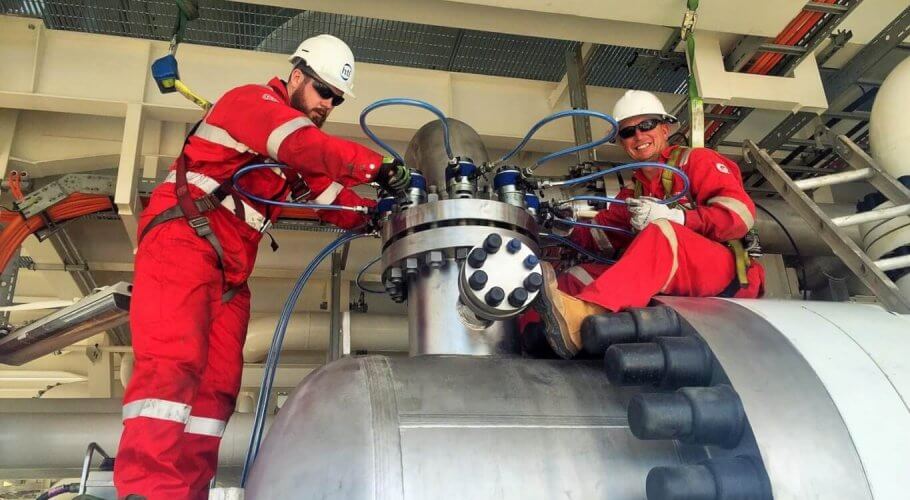
Bolt tensioning is now the preferred method of tightening bolts and studs on all critical applications. Bolt tensioners are designed for use on a wide range of applications including pipeline flanges, pressure vessels, compressor covers, boiler feed pumps and heat exchangers to name a few.
Shell and Tube, Air Cooled and the Plate-Type heat exchangers are the three most commonly used types of exchangers in the chemical and process industry. With an increasing effort in recent years to reduce both the weight and size of exchangers whilst increasing efficiency, other types of exchangers are frequently being used.
Heat transfer equipment may be selected for its type or for the function that it performs such as chiller, condenser, cooler reboiler, whereas the choice of a Shell and Tube type exchanger is determined primarily by factors such as the need for the provision for differential movement between shell and tubes, the design pressure, the design temperature, and the fouling nature of the fluids rather than the function.
Gasketed plate heat exchangers use high quality gaskets to seal and clamp together plates and protect against leaks. The gasketed plates are assembled in a pack, mounted on upper and lower guide rails, and compressed between two end frames by compression bolts.
The gasket arrangement of each plate distributes the hot and cold media in a counter-flow arrangement into alternating flow channels through the plate pack. These heat exchangers are simple and relatively cheap to maintain since the plates can easily be removed to allow maintenance procedures to be carried out.
There are three types of flanges that are found in Shell and Tube exchangers, namely:
Out of the three flange types, the weld neck flange type, which has a tapered hub with a smooth stress transition and accessibility for full nondestructive examination, provides the highest integrity.
A flange consists of three subcomponents: the flange ring, the gasket and the bolting. The successful operation of the flange depends on the correct choice, design and assembly of these subcomponents.
The external bolted joints will require re-tightening in a uniform, diametrically staggered pattern.
On average heat exchangers tend to leak every eight months as a result of changing temperatures and pressures. This requires completely stripping the heat exchanger down to change the gaskets. They can also be stripped for inspection purposes every 3 years.
HTL’s Spring Return Tensioners produce the necessary pre-load force to properly load the studs and the sealing system. You can assured that the heat exchanger is secure and tightly sealed, preventing the likelihood of leaks.
Maintenance
Heat exchangers should be cleaned as they are subject to fouling, the build- up of unwanted waste such as scale, sludge, deposits etc. These deposits need to be cleaned from the system periodically as even a light buildup of deposit can greatly reduce the effectiveness of the tube. Neglecting regular maintenance of the tubes cleanliness can cause excessive heat or cooling, which then causes physical damage and leaking tubes as a result of the differential thermal expansion of metals.
Eliminate leakages and costly downtime
To eliminate the likelihood of leakages and to ensure correctly secured flanges are achieved, HTL’s Spring Return Tensioners are available in a range of sizes to suit every application.
Complete with CE Certification, the range of HTL Spring Return Tensioners offer significant advantages to traditional tightening methods:
Pictured: HTL-ST2 1-3/8” Stud, Heat Exchanger Bolt Tensioning Application.
To find out more information or to get an instant quote contact us: call +44 (0) 1670 700 000 or email info@htlgroup.com.